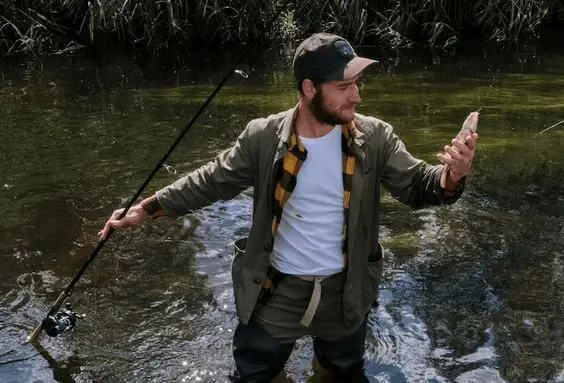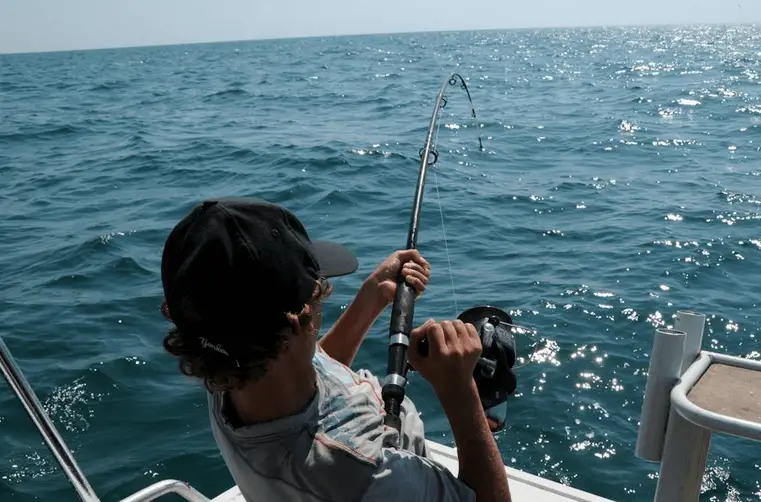New bass fishing techniques can greatly improve your chances of catching more fish and experiencing greater success on the water. We will discuss some innovative methods and strategies that have proven effective for targeting bass.
Whether you are a beginner or an experienced angler, these techniques will help you take your bass fishing game to the next level. From using advanced lure presentations to mastering the art of finesse fishing, there are various approaches you can adopt to increase your chances of landing a trophy bass.
So, read on to discover the latest and most effective techniques that can enhance your bass fishing skills and help you reel in more fish.
Understanding The Basics Of Bass Fishing
When it comes to bass fishing, understanding the basics is crucial. In order to successfully catch bass, you need to have a comprehensive understanding of various aspects such as the different types of bass, choosing the right equipment, and learning about bass feeding habits. Let’s dive deeper into these key elements:
1.1 Different Types Of Bass
Before you head out on your fishing trip, it’s important to know the different types of bass you may encounter. The two most common types are largemouth bass and smallmouth bass. While both are prized catches among anglers, they have slight differences in their behavior and habitat preferences.
If you’re fishing in freshwater lakes or rivers, you are more likely to come across largemouth bass. These bass are known for their distinct dark lateral stripe and their ability to hide among aquatic vegetation.
On the other hand, if you’re planning to cast your line in streams or rivers with clear, flowing water, you may encounter smallmouth bass. Smallmouth bass are characterized by their bronze-colored bodies and vertical black bars.
1.2 Choosing The Right Equipment
Investing in the right equipment is essential when it comes to bass fishing. It not only ensures a successful fishing experience but also makes the process more enjoyable. Here are some key factors to consider when choosing your fishing gear:
- Rod and reel: Selecting an appropriate rod and reel combo is crucial. For largemouth bass, a medium to heavy-action baitcasting rod paired with a baitcasting reel can provide the power and control you need. Conversely, for smallmouth bass, a medium-action spinning rod paired with a spinning reel may be more suitable.
- Line and lures: The choice of fishing line and lures depends on the fishing conditions and the behavior of the bass. For largemouth bass, a fluorocarbon or monofilament line with a range of bait options, such as plastic worms or jigs, can be effective. In the case of smallmouth bass, a braided line with lighter lures like crankbaits or jerkbaits may work well.
- Other essentials: Don’t forget to bring other essential items, such as hooks, weights, a tackle box, polarized sunglasses, and a landing net, to enhance your fishing experience.
1.3 Learning About Bass Feeding Habits
Understanding bass feeding habits is crucial for maximizing your chances of a successful catch. Bass are opportunistic predators, and their feeding habits can vary depending on various factors, including weather conditions and water temperature. Here are some key points to consider:
- Time of day: Bass are more active during low-light conditions, such as early morning or late evening. These are the prime feeding times you should focus on.
- Forage: Bass primarily feed on a variety of prey, including baitfish, crawfish, and frogs. Using lures or baits that mimic their natural prey can increase your chances of attracting a bite.
- Structure and cover: Bass are known for their affinity for structural elements like rocks, fallen trees, or submerged vegetation. These areas provide cover and serve as ambush points for bass to target their prey.
- Seasonal changes: Bass behavior can change with the seasons. Understanding how their feeding habits adapt to changing water temperature and environmental conditions will help you make informed decisions about your fishing techniques.
By grasping the basics of bass fishing, including the different types of bass, selecting the right equipment, and learning about their feeding habits, you are on your way to becoming a skilled angler. So grab your gear, head out to your favorite bass fishing spot, and get ready to reel in some impressive catches!
2. Mastering The Power Moves
When it comes to bass fishing, mastering the power moves can be a game-changer. These advanced techniques require skill, precision, and expert knowledge of the bass’s behavior. In this section, we will explore three power moves that every angler should have in their repertoire. From pitching and flipping to using topwater lures and perfecting the drop shot technique, these techniques will give you the edge you need to reel in those elusive trophy-sized bass.
2.1 Pitching And Flipping
Pitching and flipping are two closely related techniques that are highly effective when fishing in heavy cover or tight spaces. With pitching, you are essentially making short, accurate casts with minimal effort. This technique is perfect for targeting specific areas, such as under docks or in brush piles. Flipping, on the other hand, involves a controlled underhand release of the bait with the line extending beyond the angler’s fingertips. This allows for a more vertical presentation, making it ideal for fishing into dense cover, like thick vegetation or fallen trees.
Both pitching and flipping require precise boat control and subtle presentations. The key is to make as little disturbance as possible when your bait hits the water. This will prevent spooking the bass and increase your chances of getting a bite. By mastering pitching and flipping, you can effectively reach those hard-to-reach spots where big bass love to hide.
2.2 Using Topwater Lures
Nothing gets an angler’s heart racing quite like the explosive strikes that come with using topwater lures. Whether it’s the excitement of a bass breaking the surface or the visual spectacle of water splashing everywhere, topwater fishing is an exhilarating experience. This technique involves using best lures that float on the water’s surface, such as poppers, buzzbaits, or prop baits, to mimic prey that is struggling or fleeing.
When using topwater lures, it’s all about creating a commotion that will grab the attention of nearby bass. Vary your retrieve speed, experiment with pauses, and make sure to work the lure around any structure or cover. A well-placed topwater lure can entice even the most cautious bass to strike, making it a go-to technique for enticing big bites.
2.3 Perfecting The Drop Shot Technique
The drop shot technique has gained popularity among anglers in recent years, especially in finesse fishing situations. This versatile technique is effective when targeting deep-water bass or highly pressured fish. With the drop shot rig, the bait is suspended above the weight, giving it a natural and enticing presentation.
To perfect the drop shot technique, start by choosing the right rod and reel setup. A spinning rod with a light to medium power and a sensitive tip works best for detecting subtle bites. The rig consists of a small weight tied to the end of the line, around 6-12 inches above the hook. By using a variety of soft plastic baits, such as worms or minnow imitations, you can experiment with different colors and sizes to match the bass’s preferred prey.
With the drop shot, it’s all about finesse. Gently lower your bait to the desired depth and then twitch it lightly, making it appear alive. Pay close attention to any slight movements or line twitches that indicate a bite. When you feel a nibble, resist the urge to immediately set the hook. Instead, reel up any slack and then gently sweep the rod to the side to create tension and secure your hook in the bass’s mouth.
| Technique | Benefits |
| Pitching and Flipping | – Precise casting in tight spaces – Target specific areas effectively – Reach hidden spots where big bass hide |
| Using Topwater Lures | – Exciting explosive strikes – Simulate struggling or fleeing prey – Effective in enticing big bites |
| Perfecting the Drop Shot Technique | – Versatile technique for finesse fishing – Effective in deep-water or highly pressured situations – Natural and enticing presentation |
Mastering the power moves in bass fishing can significantly elevate your success on the water. Whether you’re targeting hidden coves, enticing aggressive strikes, or finesse fishing in deep waters, these techniques will give you the edge you need. So, grab your gear, practice your pitching and flipping, tie on some topwater lures, and perfect your drop shot technique. Get ready to reel in those trophy-sized bass and experience the thrill of mastering the power moves.
3. Advanced Strategies For Bass Fishing
When it comes to bass fishing, there’s always room to up your game. While beginners often focus on the basics, advanced anglers know that mastering new techniques can make all the difference in landing that trophy catch. In this section, we’ll explore three advanced strategies that will take your bass fishing skills to the next level.
3.1 Fishing In Different Weather Conditions
Weather conditions can greatly impact bass behavior and their feeding patterns. To increase your chances of success, it’s essential to understand how bass react to various weather scenarios.
Here is a table summarizing the different weather conditions and the corresponding bass fishing techniques:
| Weather Condition | Fishing Technique |
| Clear Skies | Topwater lures and surface baits are effective as bass tend to be more active near the water’s surface. |
| Cloudy or Overcast | Spinnerbaits and crankbaits can mimic baitfish movement, attracting bass in search of an easy meal. |
| Rainy or Stormy | Jigging or flipping techniques work well as bass seek shelter near cover and are more likely to strike at slower-moving baits. |
| Wind | Using noisy lures like buzzbaits can help bass locate your bait despite the disturbance caused by wind. |
3.2 Targeting Specific Structures
Knowing where to find bass is a crucial skill for advanced anglers. While bass can be found in a variety of structures, targeting specific spots can significantly increase your catch rates.
Consider focusing on the following structures when hunting for bass:
- Weed beds: Bass often seek shelter within thick vegetation, so casting around weed beds can yield fruitful results.
- Rock formations: Rocks provide hiding spots and ambush points for bass, making them prime areas to target.
- Submerged structures: From fallen trees to underwater ledges, submerged structures create ideal hunting grounds for bass.
- Points and drop-offs: Bass love to position themselves near points and drop-offs where they can prey on passing baitfish.
3.3 Understanding Bass Migration Patterns
Bass migration patterns play a significant role in determining where they can be found throughout the year. By understanding their movements, you can position yourself in the right place at the right time.
Here are a few key points to keep in mind when it comes to bass migration:
- Bass tend to move from deep to shallow water as the water temperature warms up.
- During spring, bass migrate to shallow areas to spawn, creating an excellent opportunity for anglers.
- In the fall, bass migrate back to deeper water to feed and prepare for the upcoming winter.
- Pay attention to natural landmarks, such as creek mouths or submerged points, as they can serve as migration routes for bass.
Mastering advanced strategies like fishing in different weather conditions, targeting specific structures, and understanding bass migration patterns can significantly improve your bass fishing game. By incorporating these techniques into your repertoire, you’ll increase your chances of landing that elusive trophy bass. Get out there, experiment, and find what works best for you!
Related Post – Night Bass Fishing Techniques
Frequently Asked Questions Of New Bass Fishing Techniques
What Is The Best Technique For Bass Fishing?
The best technique for bass fishing is to use a combination of lures, such as topwater, jerkbaits, and soft plastics. Vary your retrieve speed and depth to find what the bass are biting on. Experiment with different colors and sizes to match the baitfish.
What Is The Best Rig For Bass Fishing?
The Texas rig is considered the best rig for bass fishing. Its weedless design allows you to fish in heavy cover, and it can be used with various soft plastic baits to target bass in different depths and conditions.
Last Word
These new bass fishing techniques are a game-changer for any angler looking to up their fishing game. From finesse fishing to swimbait techniques, there are so many options to explore. With practice and dedication, you can become a master of these techniques and increase your success on the water.
So, grab your rods and reels and get ready to try out these exciting new techniques in your next bass fishing adventure!


